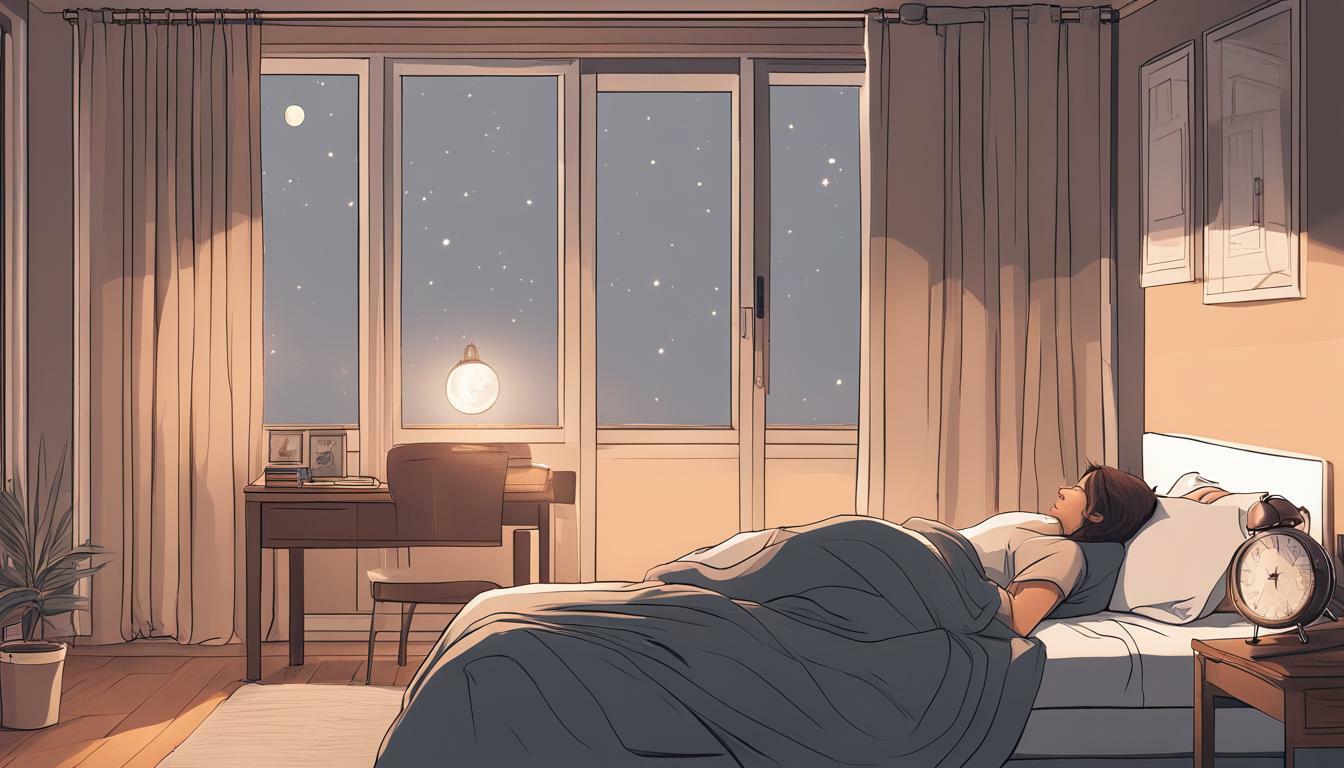Have you ever felt groggy and disoriented after a disrupted night’s sleep? This could be due to a mismatch between your circadian rhythm and blue light exposure that disrupted your sleep-wake cycle. Circadian rhythm is your body’s natural 24-hour cycle that regulates various physiological processes, including your sleep-wake cycle. The biological clock in your brain is responsible for controlling this rhythm, which is influenced by external factors such as light exposure.
Blue light, in particular, has been known to interfere with the natural circadian rhythm, as it suppresses the production of melatonin, the hormone responsible for helping you fall asleep. With the increased use of electronic devices and artificial lighting in our daily lives, we are exposed to higher levels of blue light than ever before, leading to sleep disruption and various health effects.
Key Takeaways:
- Circadian rhythm is our body’s natural 24-hour cycle that regulates various physiological processes, including our sleep-wake cycle.
- The biological clock in our brain controls our circadian rhythm, which is influenced by external factors such as light exposure.
- Blue light, especially in the evening, suppresses the production of melatonin and disrupts our sleep-wake cycle.
- Excessive blue light exposure can lead to various sleep disorders such as insomnia and have broader health effects such as eye strain and digital eye fatigue.
What is Circadian Rhythm?
Circadian rhythms, often referred to as our biological clock, are regular, natural processes that regulate the timing of physiological functions in our bodies. These rhythms are governed by an internal, biological timekeeper that is sensitive to light and other external cues.
The sleep-wake cycle is one of the most critical physiological processes regulated by the circadian rhythm. During the day, the biological clock promotes wakefulness and alertness, while at night, it signals the body to sleep. This regular cycle helps maintain appropriate melatonin production and hormone release, keeping our bodies functioning correctly.
The biological clock works by synchronizing its natural rhythms with external cues, such as light exposure. This synchronization is referred to as entrainment, and it allows our bodies to adapt to changes in the environment and maintain a consistent sleep pattern. When the biological clock is disrupted, it can result in sleep disturbances, including insomnia and other sleep disorders.
The circadian rhythm is an essential part of the human body’s function and plays a critical role in maintaining our health and well-being.
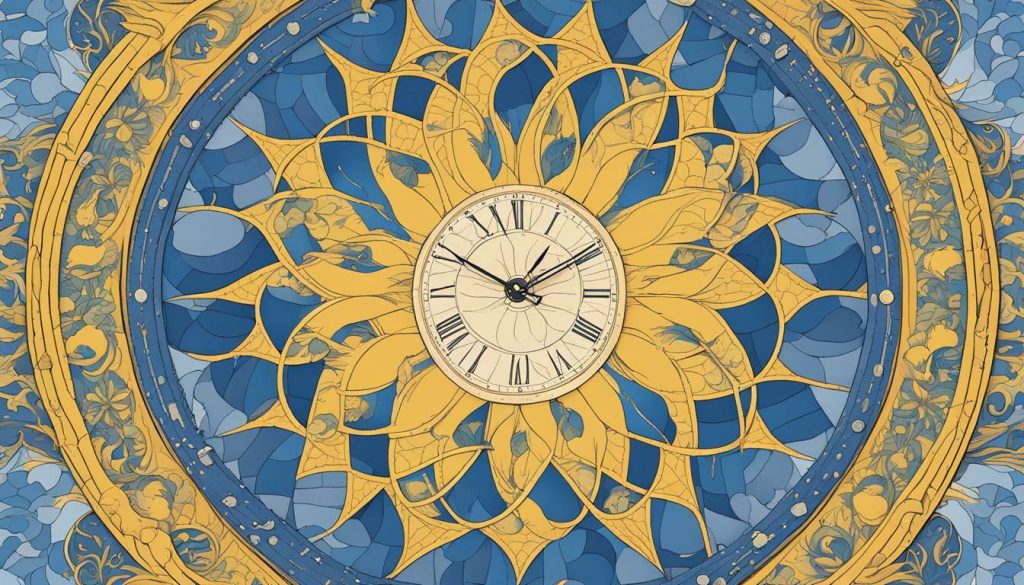
The Role of Blue Light in Circadian Rhythm Disruption
Virtually all aspects of our lives are controlled by circadian rhythms, which dictate when we sleep, wake, eat and perform various functions. However, the increased use of electronic devices and artificial lighting in recent years has resulted in an overexposure to blue light, which can disrupt our natural circadian rhythm and cause sleep disruption.
Blue light has a short wavelength that is particularly effective at stimulating the photoreceptors in our eyes, which in turn, send signals to the suprachiasmatic nucleus (SCN) – a tiny region in the hypothalamus of the brain that regulates our body’s biological clock. When we are exposed to blue light at night, it can suppress the production of melatonin, a hormone that helps regulate sleep and wakefulness, and delay the onset of sleep.

Studies have found that prolonged exposure to blue light at night can cause sleep disruption and exacerbate sleep disorders such as insomnia. In fact, research has shown that exposure to just one hour of blue light in the evening can suppress melatonin production by as much as 22%. This can lead to difficulty falling asleep, waking up frequently during the night, and overall poor sleep quality.
Moreover, the health effects of circadian rhythm disruption extend far beyond sleep disruption. Studies have linked chronic exposure to blue light to an increased risk of obesity, diabetes, and even cancer.
Given the widespread use of electronic devices and artificial lighting, it has become increasingly important to take steps to reduce our exposure to blue light in the evening and protect our circadian rhythm.
Sources of Blue Light
Blue light is present in both natural and artificial light sources, but the majority of our exposure to blue light occurs through electronic devices and artificial lighting. This section will explore the main sources of blue light and how they can affect our circadian rhythm.
Electronic Devices
The screens of electronic devices emit high levels of blue light, and prolonged exposure can have a significant impact on our sleep-wake cycle. Smartphones, tablets, and computers are the most common sources of blue light from electronic devices. According to recent studies, the average American spends over three hours a day on their smartphone, which can result in a significant amount of blue light exposure.

To reduce blue light exposure from electronic devices, consider using blue light filters or screen protectors that block or reduce blue light emissions. Many devices also have built-in settings that allow users to adjust the color temperature of their display, which can reduce the amount of blue light emitted in the evening.
Artificial Lighting
Artificial lighting can also emit high levels of blue light, which can disrupt our circadian rhythm. LED and fluorescent lights are the most common sources of blue light in indoor environments, including homes and offices.
| Light Source | Blue Light Intensity |
|---|---|
| LED Strip Lights | 25% |
| Fluorescent Lights | 35-70% |
To reduce exposure to blue light from artificial lighting, consider using warm-toned light bulbs, especially in the evening. It is also recommended to limit the use of electronic devices before bedtime and to create a relaxing environment in the bedroom to promote a healthy sleep-wake cycle.
Blue Light and Sleep Quality
Excessive exposure to blue light can disrupt the quality of your sleep, leading to various sleep disorders. Blue light exposure suppresses melatonin production, making it harder for you to fall asleep and stay asleep. This can result in disrupted sleep patterns, insomnia, and other sleep disorders that can negatively impact your physical and mental health.
Poor sleep quality can also affect your productivity, mood, and cognitive abilities during the day. It can lead to increased fatigue, irritability, and difficulty concentrating, which can further exacerbate the negative effects of blue light exposure.
To improve sleep quality and minimize the negative effects of blue light, it’s important to establish good sleep habits and reduce your exposure to blue light, especially in the evening. This can include dimming the lights in your home or using warm-toned bulbs, avoiding electronic devices for at least an hour before bedtime, and using blue light filters or screen protectors on your devices.
Taking care of your sleep quality and reducing your exposure to blue light can go a long way in supporting your overall health and well-being.
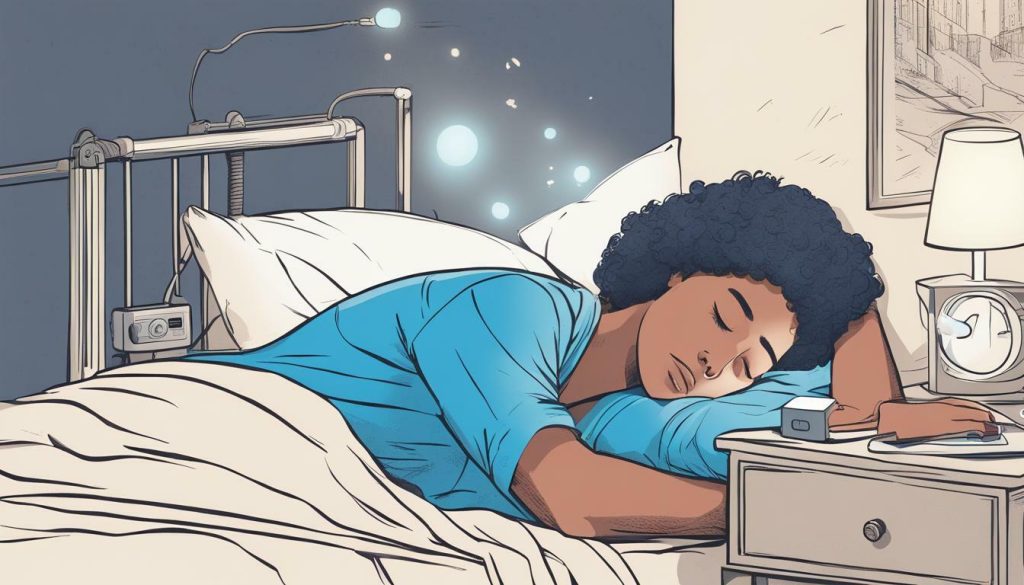
Protecting Your Circadian Rhythm: Tips for Reducing Blue Light Exposure
In today’s digital age, it’s almost impossible to avoid exposure to blue light. However, there are some strategies you can adopt to minimize its impact on your circadian rhythm and sleep quality.
Reduce Electronic Device Usage: One effective way to reduce blue light exposure is to limit your use of electronic devices, especially before bed. Try to establish a routine of unplugging from electronic devices at least an hour before your bedtime to allow your brain to wind down.
Use Blue-Light Filters: Many electronic devices have built-in blue-light filters that reduce harmful blue light exposure. Alternatively, you can get screen protectors that block out blue light and reduce glare while using electronic devices. Installing these filters can make a significant difference in your exposure levels.
Adjust Lighting: Using dimmer, warm-colored lighting can mitigate the effects of blue light on your circadian rhythm, especially in the evening. Consider using lamps that have a dimmer switch or installing warmer bulbs that emit softer light.
Establish Sleep Hygiene Practices: Adopting good sleep hygiene practices can also help you reduce exposure to blue light. This includes maintaining a regular sleep schedule, sleeping in a dark room, and avoiding caffeine and alcohol before bedtime.
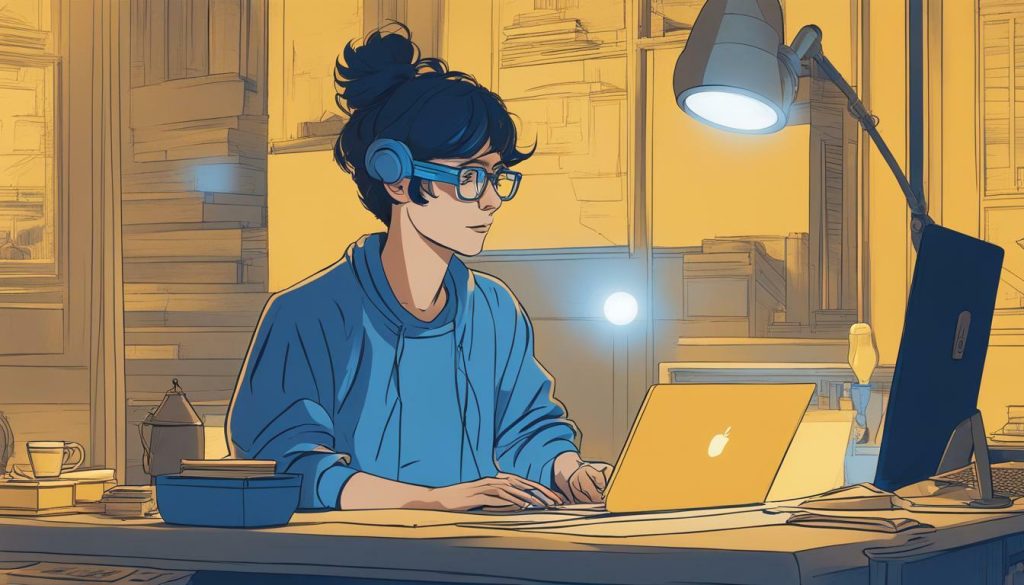
By adopting these strategies and taking a proactive approach to managing blue light exposure, you can minimize the negative impacts on your circadian rhythm, sleep quality, and overall health.
Blue Light and its Relationship with Health
As we’ve learned, excessive exposure to blue light at night can severely disrupt our sleep-wake cycle. But did you know that the health effects of blue light extend beyond sleep disruption?
One of the most well-known health effects of blue light is eye strain, also known as digital eye fatigue. This occurs when our eyes become fatigued from staring at screens for extended periods of time. Symptoms can include blurred vision, dry eyes, and headaches.
Research has shown that blue light may be a culprit in causing this type of eye strain. According to the American Optometric Association, blue light has higher energy and shorter wavelengths than other colors, which can cause it to scatter more and reduce contrast. This can lead to a strain on our eyes as they work harder to focus.
Fortunately, there are steps that we can take to minimize the health risks associated with blue light. One strategy is to practice the 20-20-20 rule: every 20 minutes, take a break from your screen and focus on something 20 feet away for at least 20 seconds. This can help reduce eye strain and give your eyes a much-needed rest.
Another strategy is to use blue light filters or screen protectors on electronic devices, such as the one shown below:
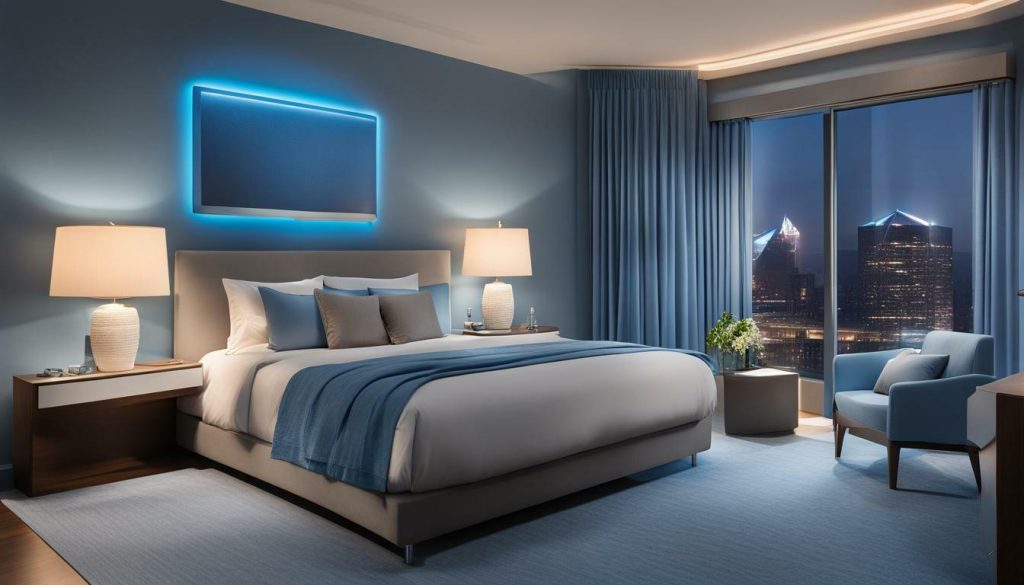 |
A blue light filter can help reduce your exposure to blue light, protecting your eyes from digital eye fatigue. |
|---|
In addition to these strategies, maintaining good sleep hygiene practices, such as avoiding screens before bedtime and establishing a consistent sleep schedule, can help protect your circadian rhythm and overall health.
Understanding the Role of Melatonin in Circadian Rhythm
One of the key players in regulating our circadian rhythm is melatonin, a hormone produced by the pineal gland in the brain. Melatonin production is regulated by the biological clock, with levels typically rising at night and falling during the day. This increase in melatonin helps us fall asleep and stay asleep through the night.
However, exposure to blue light, especially in the evening, can disrupt this natural process by suppressing melatonin production. This delay in melatonin secretion can lead to difficulties falling asleep and result in sleep disruption, which can have negative impacts on our overall health.
It is important to note that melatonin production is not the only factor in regulating our circadian rhythm, but it is a significant one. By minimizing blue light exposure in the evening and establishing good sleep hygiene practices, we can support natural melatonin production and maintain a healthy sleep-wake cycle.
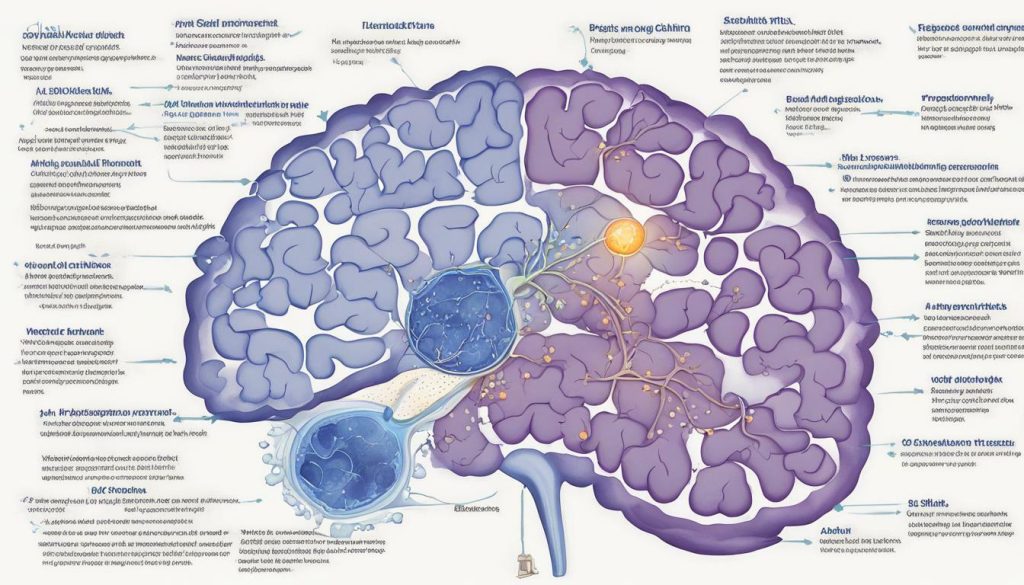
There are also external factors that can affect melatonin production, such as shift work or jet lag. In these situations, melatonin supplements may be recommended to help regulate the sleep-wake cycle. However, it is important to consult with a healthcare professional before using melatonin supplements, as they may interact with other medications.
In conclusion, melatonin plays a crucial role in regulating our circadian rhythm and supporting healthy sleep patterns. By minimizing blue light exposure and establishing good sleep hygiene practices, we can support natural melatonin production and maintain a healthy sleep-wake cycle.
The Effects of Blue Light on Specific Sleep Disorders
Blue light exposure can have a significant impact on individuals with sleep disorders, including insomnia and sleep apnea. For those with insomnia, exposure to blue light in the evening can delay the onset of sleep and decrease the overall quality of sleep. This, in turn, can exacerbate the symptoms of insomnia and lead to more prolonged episodes of sleep disruption.
Similarly, individuals with sleep apnea may experience worsened symptoms due to blue light exposure. The disrupted sleep caused by breathing difficulties can be further compounded by the delay in melatonin production and subsequent delay in sleep onset caused by blue light exposure.
It is essential for individuals with sleep disorders to be aware of the potential impact of blue light on their symptoms and to take steps to reduce their exposure. This may include using blue light filters on electronic devices, limiting exposure to artificial light in the evening, and establishing a consistent sleep routine.
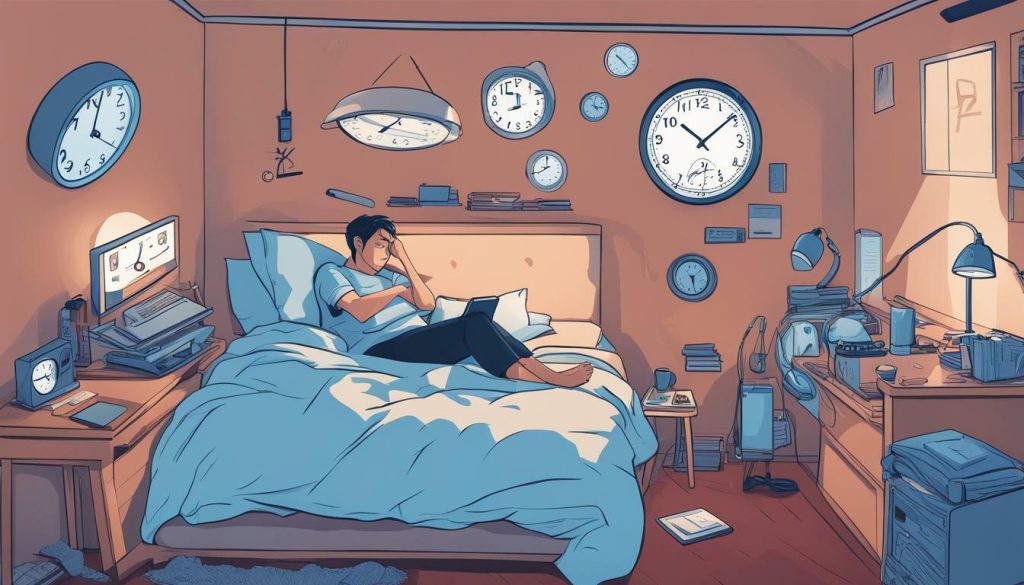
Conclusion
As we’ve seen, the impact of blue light on our circadian rhythm and overall health is significant. Given the prevalence of electronic devices and artificial lighting in our daily lives, it’s vital to understand how to manage blue light exposure effectively.
By protecting our circadian rhythm, we can improve our sleep quality and reduce the risk of sleep disorders such as insomnia and sleep apnea. It’s also essential to be aware of the wider health effects of blue light, such as eye strain and digital eye fatigue.
To reduce blue light exposure and protect our sleep-wake cycle, we can take practical steps such as using blue light filters or screen protectors on electronic devices, adjusting lighting in the evening, and establishing good sleep hygiene practices.
Ultimately, maintaining a healthy circadian rhythm and minimizing the negative effects of blue light on our health and well-being requires knowledge, awareness, and consistent effort. By taking these steps, we can improve our overall quality of life and protect our health in the long run.
FAQ
Q: What is circadian rhythm?
A: Circadian rhythm refers to the 24-hour biological clock that regulates our sleep-wake cycle and various physiological processes.
Q: How does blue light impact circadian rhythm?
A: Blue light exposure, especially in the evening, can disrupt circadian rhythm by suppressing melatonin production, delaying sleep onset, and contributing to sleep disorders.
Q: What are common sources of blue light?
A: Electronic devices like smartphones, tablets, and computers, as well as artificial lighting, are common sources of blue light.
Q: How does blue light affect sleep quality?
A: Excessive blue light exposure can disrupt sleep quality and contribute to the development of sleep disorders.
Q: How can I reduce blue light exposure?
A: Strategies for reducing blue light exposure include using blue light filters or screen protectors on electronic devices, adjusting lighting in the evening, and practicing good sleep hygiene.
Q: What are the health effects of blue light exposure?
A: Blue light exposure can potentially impact eye health, leading to symptoms such as eye strain and digital eye fatigue.
Q: What is the role of melatonin in circadian rhythm?
A: Melatonin plays a crucial role in regulating circadian rhythm, and disruptions in melatonin secretion can impact our sleep-wake cycle and overall health.
Q: How does blue light affect specific sleep disorders?
A: Blue light exposure can worsen symptoms of sleep disorders like insomnia and sleep apnea.

